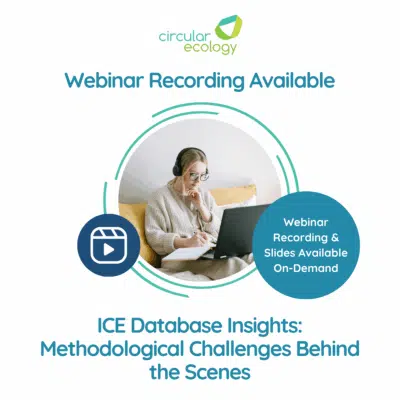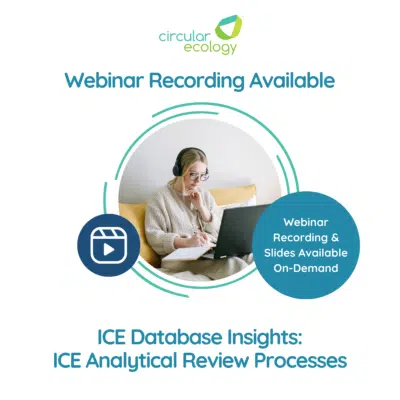Carbon Footprint Tool - Frequently Asked Questions
Alongside the release of our free Organisational Carbon Footprint Tool, we have compiled a list of frequently asked questions to help guide you through the tool and explain its functionality.
If any questions are not answered below, please do reach out and contact us directly here.
Frequently Asked Questions
An Organisational Carbon Footprint measures the impact from all emissions released by an organisation and its associated assets and activities. Organisational emissions should cover the main Greenhouse Gases (GHGs) and are typically reports under “scope” categories. Scope 1&2 emissions typically relate to an organisation’s owned or controlled activities, and Scope 3 emissions relate to all other upstream or downstream emissions arising from the organisations wider value chain (i.e. upstream supply chain, or downstream customer chain).
Circular Ecology are currently developing an e-learning training course designed to support the use of the Organisational Carbon Footprint tool. Keep in touch by subscribing to our newsletter to hear more about Circular Ecology’s training courses.
No. The tool by default is not a verification statement. If you would like to validate your carbon footprint, please contact Circular Ecology to find out more information on our Carbon Footprint Verification services.
The tool can be used to generate results calculated in alignment with the ISO 14064 methodologies, but the tool alone does not claim full adherence to all the requirements set out within ISO 14064. However, you can use the results generated in this tool within a separate ISO 14064 footprint report.
The emission factors from the tool are predominately from the UK government’s GHG emission factors dataset published annually by DEFRA / DfESNZ. However, the tool also includes a number of international electricity emission factors sourced from the nationally disclosed emission factors for each country.
Yes. The tool covers a range of more commonly utilised biofuels and low carbon alternative fuels, such as biogas, woodchip, and HVO (biodiesel).
Yes. The tool currently includes location-based grid electricity emission factors for 47x different countries. These are sourced from the nationally disclosed emission factors for each country.
No. The tool currently covers Scope 1&2 emissions only. Circular Ecology are developing a tool to cover Scope 3 emissions and so please make sure to check for updates on this in the future.
Well to tank (WTT) and Transmission and Distribution (T&D) losses are accounted for under Scope 3 – Fuel-and-energy-related Activities category and so are not covered by this tool.
The tool is designed to provide a Scope 1&2 Organisational Carbon Footprint aligned to GHG Protocol Corporate Standards, which is different to an embodied carbon assessment. The emissions associated with embodied carbon would be captured under the Scope 3 – Purchased Goods & Services category, and so is out of scope of this tool.
Yes. The GHG Protocol guidance allows for the estimation of data if it is not available. However, all estimation methodologies should be clearly stated, well-evidence, and justifiable. Third-party verification of your footprint results can provide added assurance that your footprint is accurate, and any estimation methodologies are suitable, justified, and transparent.
Webinar Recap: ICE Insights: Methodological Challenges Behind the Scenes
Circular Ecology hosted the fourth webinar in the ICE Database Insights webinar mini series on [...]
Jun
DESNZ (Defra) 2025 GHG Emissions Factors Released
The UK Department for Energy Security and Net Zero (DESNZ) have just released the 2025 [...]
Jun
Webinar Recap: ICE Insights: Are All EPDs Created Equal?
On Thursday, 22nd May, Circular Ecology hosted the third instalment in the ICE Database Insights [...]
May
Webinar Recap: ICE Insights: ICE Analytical Review Processes
On Wednesday, April 30th, Circular Ecology hosted the second session of our ICE Database Insights [...]
Apr




